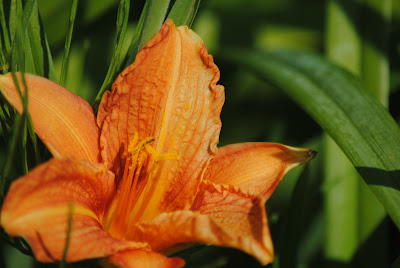This blog may help people explore some of the 'hidden' issues involved in certain media treatments of environmental and scientific issues. Using personal digital images, it's also intended to emphasise seasonal (and other) changes in natural history of the Swansea (South Wales) area. The material should help participants in field-based modules and people generally interested in the natural world. The views are wholly those of the author.
Monday, 5 June 2023
Seeing the Changes 1813
Lots of activity at Crymlyn Burrows. An alien Tiger lily (Lilium bulbiferum); Dyer's greenwood (Genista tinctoria); Rest harrpw (Ononis repens); Bedstraw broomrape (Orobranche caryophyllacea); Juncus reed; Tufted vetch (Vicia cracca); Barren strawberry (Fragaria sterilis); Ribbed melilot (Melilotus officinalis); Pyramidal orchid (Anacamptis pyramidalis); Sea spurge (Euphorbia paralias) and Sea bindweed (Convolvulus soldanella) were all in flower. New critters for the year included a mirid bug; a day flying moth; lots of Garden chafers (Phyllopertha horticola), a lurking spider and a predatory fly with its prey.
Subscribe to:
Post Comments (Atom)
What Do You Think Of It, So Far?
Tin Berners-Lee played a major role in the development of the world-wide-web. He was convinced that the benefit of enabling folk...

-
I n the UK and US, a pparently popular and successful vegan/vegetarian restaurants are reportedly closing or adding meat to their menus ( ...
-
Early ripening fruit may seem convenient but some folk think it confirms environmental stress. There's also a possibility th...
















%20mating%20NWCW.jpg)


No comments:
Post a Comment